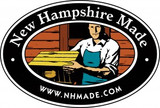In the ever-evolving world of skincare, the conversation around the types of soaps we use is endless. Among the numerous options available, tallow soap has been gaining attention for its unique properties and benefits. But you may be wondering, how does it really compare to traditional soap? Let’s dive in.
The Basics of Tallow Soap
Tallow soap is made from animal fat, primarily beef fat, that has been saponified—a process where fat is turned into soap by reacting it with an alkali. This traditional method of tallow-based soap-making has been around for centuries, providing a rich, creamy lather that’s deeply moisturizing.
Differences in Ingredients and Production
Tallow Soap: The key ingredient, tallow, is a byproduct of the meat industry, making it an efficient use of resources. It’s combined with lye (sodium hydroxide) to produce soap. Our tallow soaps and many others include natural ingredients such as essential oils for fragrance and additional properties. As such, tallow soaps are known to be a more natural choice than traditional mass-produced soaps.
Traditional Soap: Traditional soaps can be made from various oils and fats, including vegetable oils (like olive, coconut, or palm) or synthetic detergents. The production processes can vary, with some focusing on natural ingredients and others on synthetic formulations designed for specific skin types or uses.
Environmental Impact
Tallow Soap: One of the main benefits of tallow soap is its lower environmental impact. Tallow is a byproduct, and its use in soap-making helps reduce waste. Our tallow soaps are also made with minimal, recyclable packaging and without synthetic additives, making them a more eco-friendly choice.
Traditional Soap: The environmental impact of traditional soaps varies widely depending on the ingredients and production methods. Soaps made with palm oil, for example, have been criticized for their role in deforestation, habitat destruction, and unfair labor conditions. Synthetic components and packaging in some traditional soaps can also contribute to pollution and waste.
Skin Benefits and Experience
Tallow Soap closely mimics the lipids in human skin, making it highly moisturizing and nourishing. Because of its gentle, hydrating properties, it’s recommended for use on dry or sensitive skin. People also typically appreciate the creamy lather and natural scents that provide an aromatherapy and spa-like experience.
Traditional Soap: The benefits of traditional soap depends largely on the formulation. Soaps with synthetic detergents can be more drying or irritating for some skin types, while those made with natural oils can offer similar benefits to tallow soap. The variety of scents, colors, and added ingredients in traditional soaps can enhance the user experience for different preferences.
Cost and Accessibility
Tallow Soap: While less widely available in mainstream stores, tallow soap can be found in specialty shops, farmers’ markets, and online. Its price varies, but it can be more expensive than mass-produced soaps due to its artisanal nature and the quality of ingredients. While we would consider our soaps mid-range from a price perspective, they are all-natural and handmade which is provides additional benefits to your skin than traditional soaps.
Traditional Soap: Regular soaps are highly accessible and available in a range of prices. From luxury, natural soap bars to economical, mass-produced options, there’s something for every budget.
Choosing between tallow soap and traditional soap depends on personal preferences, values, and skincare needs. Tallow soap offers a sustainable, moisturizing option for those looking for natural skincare, while traditional soap provides a wide range of choices to suit various preferences and requirements. We believe that understanding the differences helps consumers make informed decisions that align with their lifestyle and environmental values.
In the end, there is no wrong soap, only the soap that is right for you. Whether you lean towards the traditional, minimalistic appeal of tallow soap or the diverse options available among traditional soaps, there’s no shortage of ways to keep clean and feel great about your choice.





